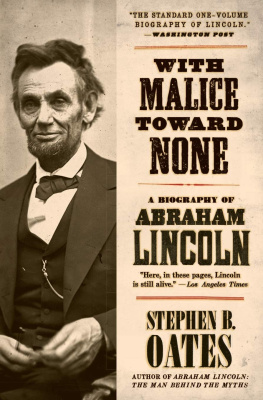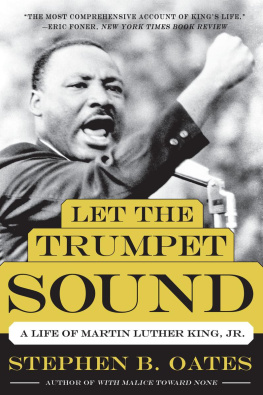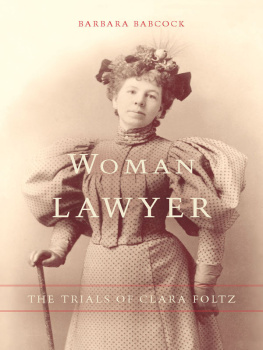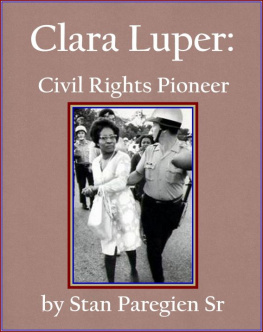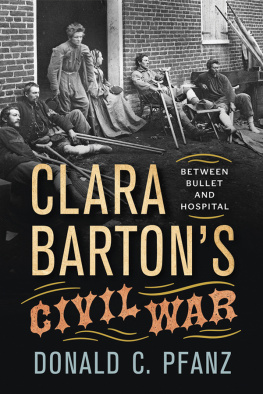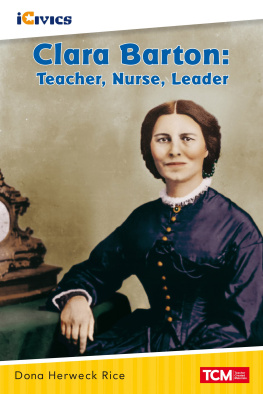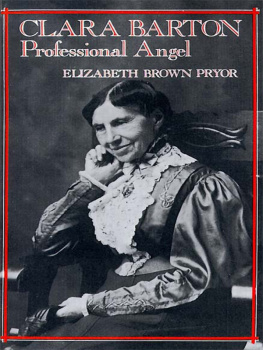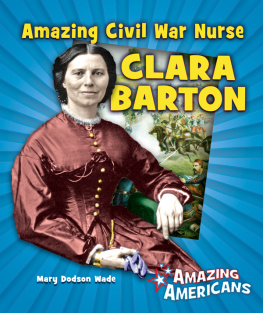A Woman of Valor
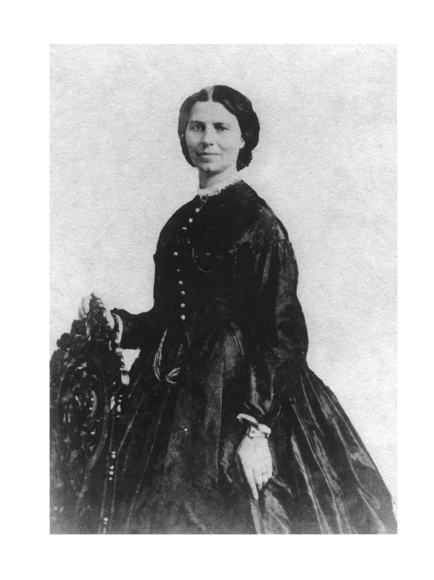
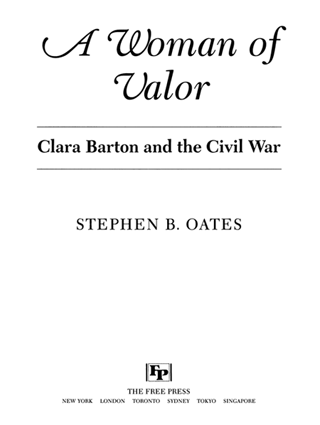
A Woman of Valor
Clara Barton and the Civil War
STEPHEN B. OATES
Copyright 1994 by Stephen B. Oates
All rights reserved. No part of this book may be reproduced or transmitted in any form or by any means, electronic or mechanical, including photocopying, recording, or by any information storage and retrieval system, without permission in writing from the Publisher.
The Free Press
A Division of Simon & Schuster Inc.
1230 Avenue of the Americas
New York, N.Y. 10020
www.SimonandSchuster.com
First Free Press Paperback Edition 1995
Printed in the United States of America
printing number
1 2 3 4 5 6 7 8 9 10
Library of Congress Cataloging-in-Publication Data
Oates, Stephen B.
A woman of valor: Clara Barton and the Civil War / Stephen B. Oates.
p. cm.
Includes bibliographical references.
ISBN 0-02-874012-2
ISBN 13: 978-0-028-74012-6
eISBN 978-1-439-10536-8
1. United StatesHistoryCivil War, 1861-1865Medical care. 2. Barton, Clara, 1821-1912. 3. NursesUnited StatesBiography.
I. Title.
E621 024 1994
973.775dc20 93-38830
CIP
Frontispiece photo by Mathew Brady.
Courtesy of Library of Congress.
For Marie
If I were to speak of war, it would not be to show you the glories of conquering armies but the mischief and misery they strew in their tracks; and how, while they march on with tread of iron and plumes proudly tossing in the breeze, some one must follow closely in their steps, crouching to the earth, toiling in the rain and darkness, shelterless like themselves, with no thought of pride or glory, fame or praise, or reward; hearts breaking with pity, faces bathed in tears and hands in blood. This is the side which history never shows.
Clara Barton
Contents
Foreword
In this portrait of Clara Barton in the Civil War, I have referred to her as Clara, because that is how she was known to her family and friends. Calling her Barton makes her seem cold and distant, when she was anything but that: in the company of people she liked, she exuded a special warmth and had a relaxed informality about her. She was Clara. And this is the story of her Civil War, the war in the battlefield hospitalsnow a bullet-ridden farmhouse, now a crumbling mansion, now a windblown tentwhere she served as nurse, relief worker, and surrogate mother or sister, wife or sweetheart, to her dear boys who lay sick, wounded, and dying by her side. The Civil War was the defining event in Claras life, shaping who she was and what she became. It gave her the opportunity as a woman to reach out and seize control of her destiny.
It is one of the most compelling stories I have ever encountered in all my years as a writer. It has a tragic national context, a sympathetic and original lead character, a wartime love affair with a married officer, powerful friendships and complex family ties, a sometimes antagonistic medical bureaucracy, obdurate male and female adversaries, plenty of battlefield action seen from a unique perspective, and a compelling plot: a passionate, driven, conflicted woman who overcomes the fearful odds against her, invades a mans domain, and helps change it dramatically.
To tell the story of Claras Civil War, I have drawn heavily on the Clara Barton manuscripts, a good many of them never used before. Because Clara was in the storm, because she served near the battlefield of Second Bull Run, on the battlegrounds of Antietam, Fredericksburg, and Battery Wagner, and near the front during the Wilderness campaign and the siege lines of Petersburg and Richmond, I have tried to depict her in the swirling chaos of battle, to give some sense of what she experienced there and how it affected her, and to describe her important contributions to the Union war effort and to the liberation of her sex. This is, of course, a work of narrative nonfiction. Using authenticated details, I have tried to evoke Claras wartime experiences through graphic scenes and images. I have tried to recreate a living woman in a living world, to simulate what it was like to be there with her as the war unfolded.
How I came to write A Woman of Valor is a story in itself. For the past several years I have worked on a sweeping biographical history of the entire Civil War epoch, one that attempts to capture it through the intersecting lives of a dozen central characters. One of them was Clara Barton. Always fiercely independent, a dedicated loner, she refused to remain in my lineup. Every time I wrote something about her in conjunction with my other figures, I had the sensation that she was trying hard to keep me from knowing and understanding her. She would float into my consciousness without a face, for example, or give me the strange feeling that she was hiding from me somewhere in my study, or had just bolted out the door. At one point my computer abruptly malfunctioned and started throwing out an entire body of informationseveral months worth of work on Jefferson Davis. Nothing I punched on the keyboard could stop the machine from its insane mission to erace every trace of the Confederate president from its memory. All I could do was watch in despair. At first I blamed this on Daviss own stubborn pride, as if he were saying, Youre not putting me in a book with Lincoln or any other hated Yankee! Later I decided it was Clara again, trying to sabotage my project in an effort to get out of it. Finally, submitting to her superior will, I put the biographical work aside and set out to write Claras Civil War story by itselfand on a new computer, I might add. After that, she cooperated fully. I was helped to my decision by the remarkable details, so many of them never before published, that I kept discovering in the Clara Barton archives. Now I have told the story Clara wanted me to tell, speaking in an empathetic voice that attempts to understand and capture her in all her complexity, all her humanity. I hope she is not too disappointed with the result.
PART ONE
The Search
Clara would never forget the day the Civil War first touched her personally. She was in Washington City, working as a copyist in the U.S. Patent Office, when she heard that something terrible had happened to the Sixth Massachusetts Regiment in Baltimore. A riot, someone said. The soldiers had been attacked while marching through the city en route to Washington, and the survivors were due in on the next southbound train.
Clara was indignant, excited, alarmed. She was from MassachusettsNorth Oxford, to be preciseand many of her childhood friends were members of the old 6th Regiment. She hoped to God none of them had been killed or wounded. Anxious to help the soldiers somehow, Clara and her sister, Sally Vassall, joined a crowd of Washingtonians hurrying toward the Baltimore and Ohio Railroad Station. Clara walked with a resolute, flat-footed stride, her head erect, her eyes focused straight ahead. Her full name was Clarissa Harlowe Barton, and (she liked to point out) she was the daughter of Captain Stephen Barton, a veteran of the Indian wars in the old Michigan Territory. She was small, slender, and striking: only five feet tall, with silky brown hair parted in the middle and combed into a bun in the back of her head; she had a round face, a wide, expressive mouth, and exquisite, dark brown eyes. It was hard to tell her age; she looked to be in her late twenties but was actually thirty-nine. She was unmarried by choice and one of only a handful of women employed by the Federal government in Washington. In the current crisis, she was an ardent Republican and patriotfrom the bottom of my heart, she wrote a cousin, I pray that the thing may be tested, may the business be taken in hand and proved, not
Next page

